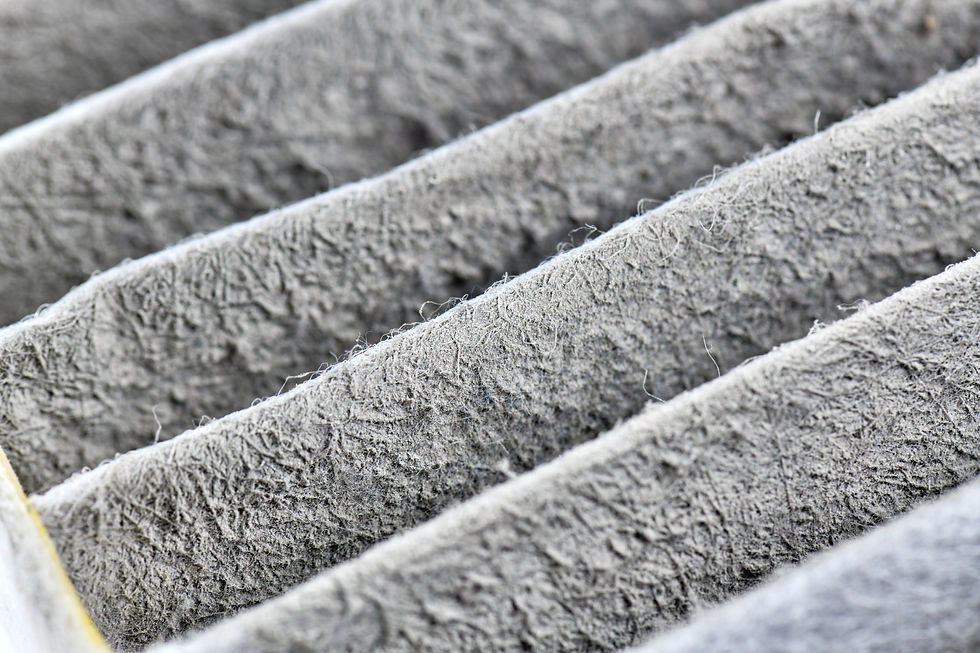The Role of ESG in Building IAQ Retrofits: Achieving Sustainability Goals
- Jennifer Crowley
- Jul 4, 2024
- 4 min read
Updated: Jul 8, 2024

Environmental, Social, and Governance (ESG) criteria are becoming increasingly crucial in the corporate world. These principles guide companies in making decisions that are not only financially beneficial but also environmentally sustainable, socially responsible, and compliant with governance standards.
As businesses strive to meet these goals, building retrofits emerge as a key strategy. Retrofitting buildings with advanced indoor air quality solutions from Blade Air can significantly contribute to achieving ESG objectives, enhancing sustainability, and promoting occupant health.
Environmental Impact

One of the primary components of ESG in building IAQ retrofits is the environmental impact of business operations. Retrofitting buildings to optimize IAQ with Blade Airs solutions offers substantial environmental benefits:
Energy Efficiency: According to the U.S. Department of Energy, HVAC systems account for about 40% of the energy used in commercial buildings. Blade Air’s advanced filtration systems, such as our Pro Filters and HEPA+ filters, enhance the efficiency of HVAC systems. By reducing the load on these systems, energy consumption is significantly lowered. This not only reduces operational costs but also minimizes your building’s carbon footprint.
Carbon Footprint Reduction: The U.S. Environmental Protection Agency (EPA) estimates that improving energy efficiency in buildings can reduce greenhouse gas emissions by up to 20%. Traditional HVAC systems can be energy-intensive, contributing to higher greenhouse gas emissions. Blade Air’s solutions, including UV-C light technology and zero-waste carbon filters, help optimize HVAC performance, leading to lower emissions and a more sustainable operation.
Resource Conservation: By improving the longevity and efficiency of existing HVAC systems, Blade Air’s IAQ retrofitting solutions reduce the need for frequent replacements and repairs, conserving resources and reducing waste.
Social Responsibility

The social aspect of ESG focuses on the impact of business operations on people and communities. Improving IAQ through retrofitting has significant social benefits:
Occupant Health: The World Health Organization (WHO) states that poor indoor air quality is responsible for approximately 3.8 million deaths annually due to non-communicable diseases like stroke and chronic respiratory diseases. Enhanced air quality reduces the presence of allergens, pollutants, and pathogens in indoor environments. This leads to fewer respiratory issues, allergies, and illnesses among occupants, promoting overall health and well-being.
Community Wellbeing: Healthier indoor environments contribute to the well-being of the community. Schools, offices, and residential buildings that prioritize air quality create safer, more comfortable spaces for people to live, work, and learn.
Employee Productivity: A Study by the Harvard T.H. Chan School of Public Health has shown that improving IAQ can boost productivity by up to 11%. Better air quality is linked to improved cognitive function and by investing in air quality improvements, businesses can foster a healthier, more productive workforce.
Governance and Compliance

Governance in ESG involves adherence to regulations and standards that promote sustainability and ethical practices. Retrofitting buildings for IAQ with Blade Air solutions ensures compliance with these regulations:
Regulatory Compliance: Many regions have stringent air quality standards and energy efficiency regulations. For example, the EPA’s Clean Air Act requires businesses to meet specific air quality standards to protect public health. Blade Air’s advanced filtration and purification systems help buildings meet and exceed these standards, avoiding potential fines and legal issues.
Sustainability Reporting: Companies increasingly need to report on their sustainability efforts. Implementing Blade Air’s solutions provides tangible improvements in energy efficiency and air quality, which can be documented and reported to stakeholders, demonstrating a commitment to ESG principles.
Ethical Practices: By choosing sustainable retrofitting solutions, businesses align their operations with ethical practices that prioritize the health of the environment and the community.
ESG in Building IAQ Retrofits Case Study
The Historic Toronto Distillery District

In December 2021, the Distillery District management team contacted Blade Air to improve IAQ in their buildings, which were currently running MERV-13 filters. They sought a solution that balanced reducing their carbon footprint with creating a healthier workspace for tenants, without the prohibitive costs of retrofitting and HEPA or UV solutions, which are energy-intensive.
Blade Air implemented electromagnetic Pro Filters, which use active polarization fields to outperform HEPA in capturing particulate matter in the viral range. These filters have nearly 90% lower static pressure than HEPA and over 70% lower than MERV-13 filters, leading to significant energy savings. Additionally, electromagnetic filters inactivate viruses, offering comprehensive air quality improvement.
ESG Results:
Energy Savings: Achieved an impressive 75% reduction in fan motor energy consumption, significantly lowering operational costs and environmental impact.
Superior Indoor Air Quality: Blade Air's electromagnetic Pro Filters outperformed previous MERV-13 filters by 2.25 times in capturing and removing airborne bacteria, vastly improving air quality.
Streamlined Maintenance: By switching to Pro Filters, which only need to be replaced twice a year instead of quarterly, the Distillery District saw up to a 50% reduction in labor costs associated with maintenance.
Logistical Savings: Pro Filters streamlined logistics by reducing storage and delivery needs, leading to an incredible 92% cost savings and further lowering emissions.
These outstanding results highlight Blade Air’s ability to drive substantial energy and operational savings, enhance cognitive function through superior air quality, and significantly reduce maintenance and logistical costs. By implementing Blade Air's advanced air quality solutions, the Distillery District not only met but exceeded its ESG goals, setting a new standard for environmental sustainability and occupant well-being.
Improving IAQ by integrating ESG principles into business operations is not only a strategic move but also a moral imperative in today’s world. Retrofitting buildings with Blade Air’s advanced air quality solutions helps businesses achieve their sustainability goals by improving energy efficiency, reducing carbon footprints, enhancing occupant health, and ensuring compliance with regulations.
Ready to integrate ESG principles into your building’s operations? Contact Blade Air today to discover how our advanced air quality solutions can help you achieve your sustainability goals. Transform your building, enhance occupant health, and demonstrate your commitment to the environment and community with your trusted Partners at Blade Air - Let’s make a positive difference, together.



















